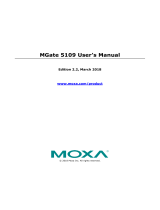
6
2. DNP3 Protocol Primer
PXM 4/6/8K DNP3 Ethernet Communications User Manual MN150005EN January 2017 www.eaton.com
2.3 Static and Event Data
The application layer works together with the transport and
link layers to enable reliable communications. It provides
standardized functions and data formatting with which
the user layer above can interact. Before functions, data
groups, and variations can be discussed, the terms static,
events, and classes need to be covered.
In DNP3, the term static is used with data and refers to the
present value. Thus static binary input data refers to the
present On or Off state of a bi-state device. Static analog
input data contains the value of an analog at the instant it
is transmitted. One possibility DNP3 allows is requesting
some or all of the static data in an outstation device.
DNP3 events are associated with something significant
happening. Examples are state changes, values exceeding
some threshold, snapshots of varying data, transient data,
and newly available information. An event occurs when a
binary input changes from an On to an Off state or when
an analog value changes by more than its configured dead-
band limit. DNP3 provides the ability to report events with
and without time stamps so that, if desired, the master will
have the information to generate a time sequence report.
The master’s user layer can direct DNP3 to request events.
Usually, a master is updated more rapidly if it spends most
of its time polling for events from the outstation and only
occasionally asks for static data as an integrity measure.
The reason updates are faster is because the number of
events generated between outstation interrogations is small
and, therefore, less data must be returned to the master.
DNP3 goes a step further by classifying events into three
classes. When DNP3 was conceived, class 1 events were
considered as having higher priority than class 2 events,
and class 2 were higher than class 3 events. While that
scheme can be still be configured, some DNP3 Users have
developed other strategies more favorable to their opera-
tion for assigning events into the classes. The user layer
can request the application layer to poll for class 1, 2, or 3
events or any combination of them.
2.3.1 Variations
DNP3 has provisions for representing data in different
formats. Examination of analog data formats is helpful to
understand the flexibility of DNP3. Static, present value,
analog data can be represented by variation numbers as fol-
lows:
1. A 32-bit integer value with flag;
2. A 16-bit integer value with flag;
3. A 32-bit integer value;
4. A 16-bit integer value;
5. A 32-bit floating point value with flag; and
6. A 64-bit floating point value with flag.
ote:N The flag referred to is a single octet with bit fields
indicating whether the source is on-line, the data
source restarted, communications are lost with a
downstream source, the data is forced and the value
is over range.
Not all DNP3 devices can transmit or interpret all six varia-
tions. Later, DNP3 levels are discussed, but for now, suffice
it to say that DNP3 devices must be able to transmit the
simplest variations so that any receiver can interpret the
contents.
Event analog data can be represented by these variations:
1. A 32-bit integer value with flag;
2. A 16-bit integer value with flag;
3. A 32-bit integer value with flag and event time;
4. A 16-bit integer value with flag and event time;
5. A 32-bit floating point value with flag;
6. A 64-bit floating point value with flag;
7. A 32-bit floating point value with flag and event time;
and
8. A 64-bit floating point value with flag and event time.
The flag has the same bit fields as for the static variations.
2.3.2 Group
It appears by looking at the above variations that variation 1
and 2 analog events cannot be differentiated from variation
1 and 2 static analog values. DNP3 solves this predica-
ment by assigning group numbers. Static analog values are
assigned as group 30, and event analog values are assigned
as group 32. Static analog values, group 30, can be format-
ted in one of 6 variations, and event analog values, group
32, can be formatted in one of 8 variations.
When a DNP3 outstation transmits a message containing
response data, the message identifies the group number
and variation of every value within the message. Group and
variation numbers are also assigned for counters, binary
inputs, controls and analog outputs. In fact, all valid data
types and formats in DNP3 are identified by group and
variation numbers. Defining the allowable groups and varia-
tions helps DNP3 assure interoperability between devices.
DNP3’s basic documentation contains a library of valid
groups and their variations.
2.3.3 Objects
When data from an index is transmitted across the wire,
the sender must suitably encode the information to enable
a receiving device to parse and properly interpret this data.
The bits and bytes for each index appearing in the mes-
sage are called an object. That is, objects in the message
are the encoded representation of the data from a point, or
other structure, and the object format depends upon which
group and variation number are chosen.




















